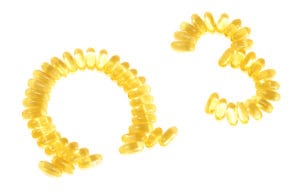Written by Halima Phelps, Staff Writer. A daily three-month supplementation with 1000mg of EPA, 500 mg of DHA and 900 mg of α-linolenic acid significantly improved intraocular pressure in the 33 participating normotensive subjects compared to the controls.
 Within the eye, there is an intricately-designed network of small structures that function to help bring the gift of vision to the human body. Retinal ganglion cells (RGC’s) are among the critical structures of this network, as they are responsible for transmitting visual information about spatial and temporal components as well as direction of object movement.1 These neuronal cellular structures span their length from the retina, where the cell bodies of RGC’s are found, and through the optic nerve via which their axonal tails travel as they exit the posterior aspect of the eyeball. 2 In this location where the optic nerve transcends the eyeball to relay information back to the brain, the maintenance of proper intraocular pressure (IOP) is crucial.
Within the eye, there is an intricately-designed network of small structures that function to help bring the gift of vision to the human body. Retinal ganglion cells (RGC’s) are among the critical structures of this network, as they are responsible for transmitting visual information about spatial and temporal components as well as direction of object movement.1 These neuronal cellular structures span their length from the retina, where the cell bodies of RGC’s are found, and through the optic nerve via which their axonal tails travel as they exit the posterior aspect of the eyeball. 2 In this location where the optic nerve transcends the eyeball to relay information back to the brain, the maintenance of proper intraocular pressure (IOP) is crucial.
If the IOP is increased this could directly affect the RGC’s, potentially resulting in vision impairment or blindness. The degeneration of these RGC’s results in a condition known as glaucoma. 2 Glaucoma is the leading cause of irreparable blindness of 70 million people worldwide, and the primary conventional treatments for the condition are the use of ocular hypotensive drops, laser trabeculoplasty and surgery.2
In this study 3 a pooled analysis of data from two double-masked placebo-controlled randomized trials by Australian New Zealand Clinical Trials Registry, using 105 young, normotensive adults, was studied to assess if increased IOP could be treated using oral omega-3 supplementation (~1000 mg EPA, ~500 mg DHA, and ±900 mg α-linolenic acid).3 Subjects were male and female, and typically had low dietary intakes of omega-3 fats. No subjects were diagnosed with glaucoma prior, and all had IOP values <21mm Hg. Bartlett’s test was used to measure IOP deviations. Subjects were daily given either an oral omega-3 supplement (n=72) or a placebo (n=33) of ~1500 mg olive oil for 3 months.3 Baseline EPA and DHA intake for the groups was (mean ± SEM, 154.0 ± 22.7 vs. 172.4 ± 22.3 mg/day for placebo and omega-3 groups, respectively P=0.61)
Results at the three month period were a decrease in IOP to 13.6 ± 0.3 mmHg (reduced by -0.6 ± 0.2 mmHg) with omega-3 supplementation, but an increase of IOP to 14.2 ± 0.4 mmHg (increased 0.5 ± 0.3 mmHg) from a baseline of 14.3 ± 0.3 and 13.8 ± 0.5, respectively; (P<0.05).3 The total IOP decrease was 8%.
Omega-3 supplementation warrants further long term studies using a more diverse ethnic population and a hypertensive adult cohort. This could be especially beneficial for low-income populations for whom dietary additions and changes could pose a more affordable, beneficial therapy in blindness prevention.
Source: Downie, Laura Elizabeth, and Algis Jonas Vingrys. “Oral Omega-3 Supplementation Lowers Intraocular Pressure in Normotensive Adults.” Translational vision science & technology 7, no. 3 (2018): 1-1.
Copyright 2018 The Authors
Posted December 10, 2018.
References:
- Zhou ZJ, McCall MA. Retinal ganglion cells in model organisms: development, function and disease. The Journal of physiology. 2008;586(18):4343-4345.
- Weinreb RN, Aung T, Medeiros FA. The pathophysiology and treatment of glaucoma: a review. Jama. 2014;311(18):1901-1911.
- Downie LE, Vingrys AJ. Oral Omega-3 Supplementation Lowers Intraocular Pressure in Normotensive Adults. Translational vision science & technology. 2018;7(3):1-1.

